Flowers in the landscape design of backyards, summer cottages, house plots

In the process of beautification of personal or summer cottages, the correct choice of flower plants, which can become a bright, spectacular accent of landscape design, plays an important role. On the websites of specialized online stores, it is possible to order flowers for decorating landscapes made in different stylistic directions.
Types of flower beds
A huge species and varietal variety of flower crops allows you to create unique flower arrangements on personal and summer cottages. The number of possible options for planting and placing flowers in a landscape space is limited only by the imagination of a designer or decorator. But at the same time, there are several basic types of flower beds, from which professional landscape designers make a start in their work, these are:
- classic flower bed - a flat decorative composition that can vary in shape and size;
- flower beds - regular rectangular or curved flower beds, laid along walls, fences, paths, there are one or two-sided;
- ribbon flower beds (borders) - represent a narrow strip of closely planted plants;
- multi-level alpine slides - a combination of colors with natural materials (stones, cobblestones, pebbles);
- mixborders - a landscape flower garden bordering different zones on the site, artificial reservoirs, architectural objects, consists of plants planted in groups;
- parterres (arabesques or ornamental flower beds) - decorative compositions with careful planning, allowing you to create complex floristic patterns;
- modular - created on large spaces, is a "mosaic" of continuous filling, consisting of separate sectors where plants are planted;
- "Islands" or "decorative spots" - flower beds, broken on glades, lawns, making the landscape brighter, more emotional;
- landscape (naturalistic) - create the impression of natural, wild areas overgrown with flowering crops;
- mobile - planting material is planted in containers, hanging or floor pots, baskets, pots, which allows, if necessary, to transfer the composition to the desired place.
All varieties of flower beds can differ in the "set" of planting material (by type, color palette, height). To enhance the decorative effect, the compositions are complemented by ferns, shrubs, dwarf conifers.
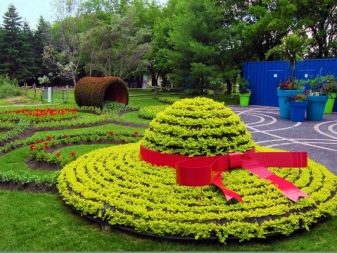
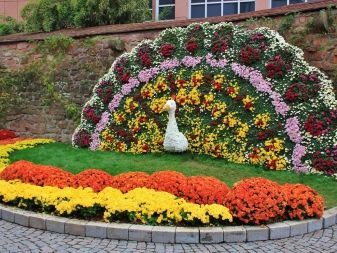
Classification of floral plants for landscaping
On the pages of catalogs of specialized online stores, a huge variety of colors is presented for landscaping private and public areas. The assortment of flowering crops is classified according to several parameters, these are:
- height (undersized, high);
- growing period (annuals, perennials);
- landing place (light-loving, shade-loving, water-loving);
- flowering period (early, late, blooming throughout the season);
- the degree of resistance to natural factors (temperature extremes, high humidity, sunlight);
- breeding method (tuberous, bulbous, seed, rhizome, tuberous);
- species (bush, ground cover, curly, creeping).
Additionally, flowering plants are classified according to shape, size, shades of flowers and inflorescences.Taking into account the characteristics and decorative features of different species, you can create unique flower arrangements that will delight with their beauty from early spring to late autumn.

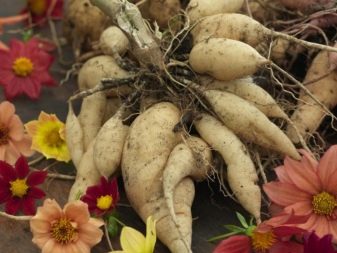
What to consider when choosing flowering plants
When creating a landscape design, it is worth remembering that when creating a beautiful and harmonious space in a summer cottage or personal plot, you need to pay attention to a whole list of important factors and parameters. When choosing types and varieties of flowering plants, it is important to consider:
- natural conditions of the climatic zone where it is planned to create flower beds;
- groundwater level at the site;
- fertility, acidity and other characteristics of the soil;
- the degree of natural light;
- size, layout and relief features of the site;
- the stylistics of the general design of the territory;
- flowering time of each species to ensure high aesthetic qualities of the landscape in different periods.
A very important factor is the compatibility of plants that can grow side by side without harming each other. It is worth paying close attention to the planting of different varieties of the pink family, which are very demanding on the "neighbors" of other flower crops. Therefore, for planting in a summer cottage or a personal plot, it is worth ordering roses, which experts recommend using in landscape design. For roses, it is best to set aside a special place (create a rose garden).
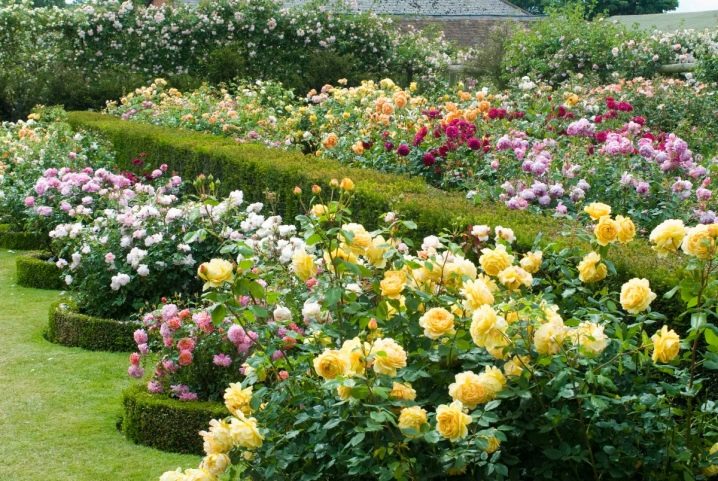
Choosing a location for flower beds
Flower arrangements will be able to fully fulfill their aesthetic purpose, if you choose the right location for them on the site. You can place flower beds:
- along fences, hedges, paths, walls;
- at the borders of different functional areas on the common territory;
- in specially designated areas on lawns;
- near doors, windows, entrance groups, arches, terraces, gates;
- next to swimming pools, fountains, artificial reservoirs;
- in the installation area of gazebos, barbecues, swings, benches and other small architectural forms;
- around fruit-bearing and ornamental trees or vegetable beds.
In case of complex relief of the site, flower beds are divided at different levels, placed on the slopes. Floristic compositions can be suspended or represent a continuation of decorative objects.
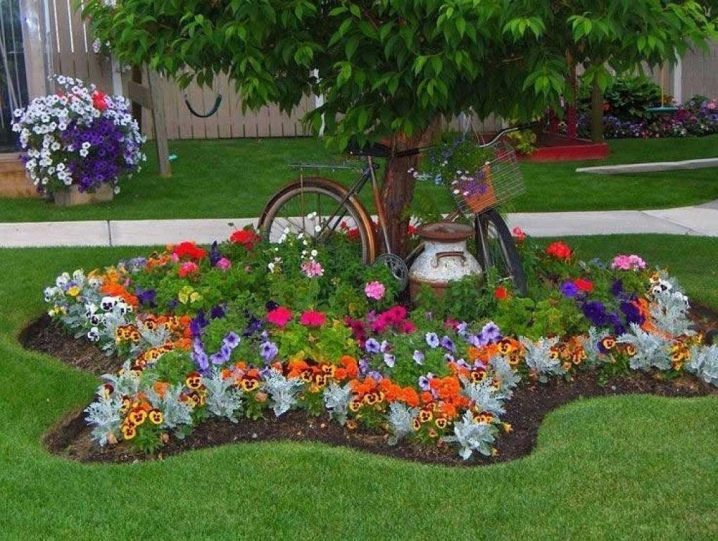
Planting and caring for flowers
It is very important to choose the right planting site for different types of flowers. Shade-loving ones are best planted in areas where direct sunlight rarely falls. For light-loving crops, it is necessary to allocate places that are illuminated throughout the day. Recommendations for caring for different flower plants may differ, but there is a list of general rules, this is regular:
- humidification (watering is carried out depending on the intensity of natural precipitation);
- weed removal;
- loosening the soil;
- application of fertilizers recommended for different species and varieties;
- trimming and garter (if necessary).
When planting flowers, you should carefully consider the characteristics of the soil. If the parameters recommended for the cultivation of certain flowering plants do not match, it is important to enrich the soil with the necessary additives and fertilizers in a timely manner.
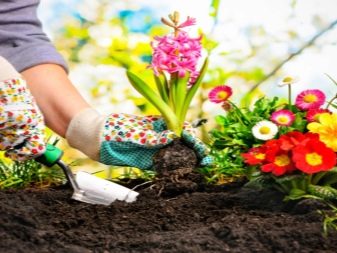
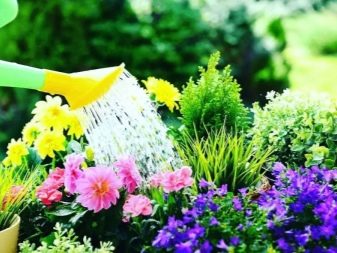



































































The comment was sent successfully.